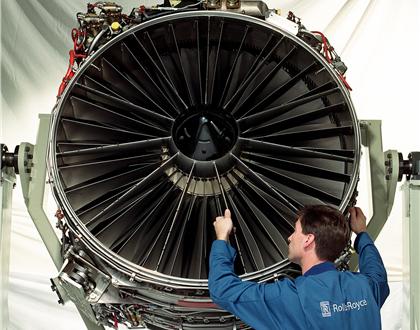Profits have risen by 7% at aero engine maker Rolls-Royce as airlines buy more fuel-efficient engines for their fleets.
The global group, which has its main UK defence aerospace plant at Patchway, Bristol, achieved the £637m pre-tax profits increase on revenues up 5% up at £5.8bn for the six months to the end of June.
Rolls said it expects modest growth in underlying revenue and profit at its defence aerospace business as military spending is reined in by governments across the world. In the marine sector, which is also supplied by engines made at Patchway, the group expects a modest increase in underlying revenue, with underlying profit broadly flat.
Patchway makes a range of engines for aircraft such as the EJ200 for the Eurofighter Typhoon and the Adour for the Hawk trainer.
It is also working on the TP400 engine for Airbus’s A400M military transport aircraft which enters service next year.
During the period the group opened a state-of-the-art plant in Singapore where it will assemble large civil engines for the first time outside the UK. It also announced an expansion programme of its global network of Authorised Maintenance Centres (AMCs) for defence aerospace customers, which will boost its capacity to provide repair and overhaul services for the C-130 Hercules’ T56 engines.
Rolls’ defence aerospace order book fell by 8% to £5.5bn reflecting budget pressures on major customers in Europe and North America.
Net order intake during the period fell to £600m as a result of cancellations worth £400m, mainly US cuts to the C27J transporter aircraft programme.
Among the major defence orders in the period was the $315m contract with US engine giant Pratt & Whitney for 17 LiftSystem sets for the F-35B STOVL (short take-off, vertical landing) variant of the Lightning II Joint Strike Fighter (pictured below).
Work is being carried out on the pioneering technology at the Patchway plant.
Rolls also signed a £100m contract extension to maintain the engines for the UK MoD’s fleet of C-130 military transport and VC10 tanker fleets of aircraft, and it also secured a contract with the Royal Australian Air Force to help improve the fuel efficiency of its fleet of C-130 military transport aircraft.
While defence-related revenue increased by 4% profits were 11% lower.





























